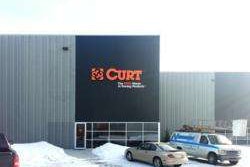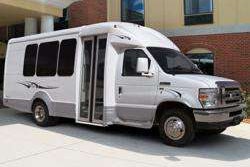 By Steve Temple
By Steve Temple
When it comes to knowing how to keep a working pickup on the road, it seems like we never have enough room for all the tech tips shop mechanics share with us.
One area we didn’t touch on was the importance of using the right gear oil for your truck’s differential(s) – and keeping it clean.
While following the OE recommendations for fluid changes is the simple answer, keep in mind that pickup diffs don’t have filters. (A magnet in the diff cover drain plug is a help. But it’s not the same as a filter.)
So, all the wear metals from normal use and the oxidation byproducts that create sludge just keep recirculating around the gears, accelerating wear.
The service techs we’ve talked with suggest changing the diff oil within the first 5,000 miles following an axle or gear replacement.
From there, changing gear oil depends on how hard the differential works, and how hot the oil gets.
For those working pickups that tow and/or haul a lot, hot gear oil is common, which increases oxidation that can affect its lubricity and degrade the additives.
Hard use also contributes to more wear metals, especially when the oil begins to break down.
As a general rule of thumb, if you tow at max load for 50 percent or more of the time, figure on changing the diff oil every 15,000 miles.
Longer intervals of 30K to 60K are okay for medium duty uses, and even 100K with a synthetic lube in a lightly used rig. (We run Mobil1 synthetic gear oil in Big Red.)
One caution on synthetic gear oils, though: Eaton Performance (https://www.eaton.com/us/en-us.html) reports that one of the most common questions received concerns which oil to use in its Truetrac differentials.
Eaton recommends those who have Trutracs only run conventional petroleum/mineral-based oil.
The reason? The Truetrac locks the axles when internal gears try to separate from each other, caused by a loss of wheel traction. The gears then bind together until wheel spin is stopped.
But with synthetic oil, the gear surfaces can become a little too slippery, decreasing the effectiveness of the locker.
WATCH THOSE COLD-AIR INTAKES
Cold-air intakes (CAIs) are one of the first underhood upgrades owners are doing to get better performance from their gas-powered pickup engines. But not all CAIs are for the better in some instances.
According to numerous techs and powertrain engineers we’ve talked to over the past few months, adding a CAI can actually rob the engine of both power and fuel economy. Not a good thing.
The reason is the sensitivity of the Mass Air Flow sensor (MAF), which is the frontline probe the engine management system uses to set timing and fuel delivery parameters.
“If the laminar flow of the air passing the MAF gets disturbed by the aftermarket intake,” says GM Assistant Chief Engineer Cheryl Balsley who helped design the Gen5 5.3L in the 2014 pickups, “the algorithms in the ECM react accordingly, which can result in a drop in both power and mpg. It can even trigger fault codes.”
So if you put on a cold-air intake and noticed a loss of mpg, you might want to see if putting the OE intake back on or changing to a different CAI brings back the numbers.
HARMONIC DAMPERS
Speaking of spinning motion, how about the damper on the crankshaft? Without one, or with an improperly designed or  worn-out unit, your truck’s engine will produce torsional vibrations that can induce a back-and-forth oscillation through the engine’s crankshaft.
worn-out unit, your truck’s engine will produce torsional vibrations that can induce a back-and-forth oscillation through the engine’s crankshaft.
These, in turn, can collide with other vibration frequencies of the same magnitude, amplifying them to produce internal engine damage.
The result? Worn timing gears, timing chains, irregular valve train lash, destroyed main bearings, fractured accessory pulley mounts and ultimately even crankshaft failure.
Stock dampers, which use rubber or elastomer to control torsional vibrations, break down over time. That causes the damper to operate incorrectly throughout the entire RPM range, reducing torque.
And if there have been mods to the engine that improve hp and torque, the vibrations are greater.
If one of your trucks has damper issues, upgrading to a Fluidamper Harmonic Damper might be a really good option.
They use a viscous silicone fluid, internal inertia ring and a laser-sealed housing to control the harmful vibrations.
We’ve seen dyno reports that show replacing the OE damper with a Fluidampr actually boost low-end torque as well as fuel economy. Something to consider.








